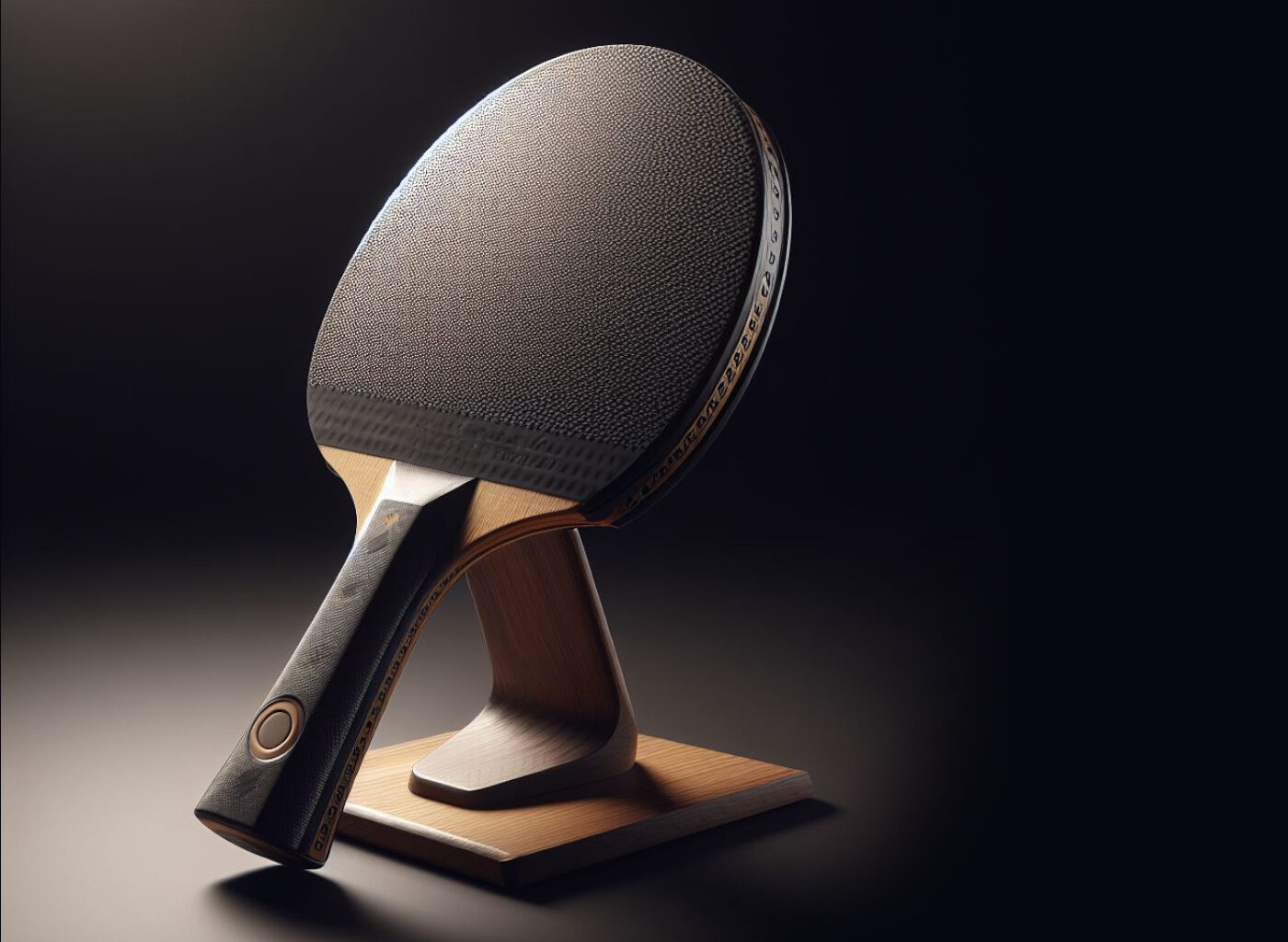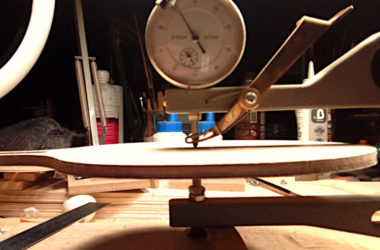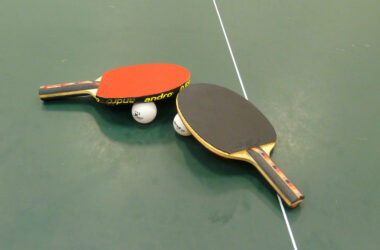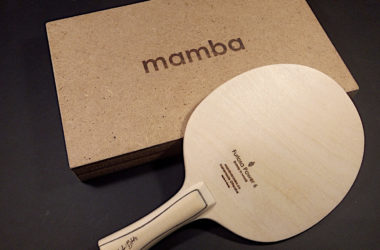

Between Innovation and Sustainability
What is an Eco-Performance Table Tennis racket? The world of table tennis, once steeped in the tradition of wood and synthetic materials, has undergone a quiet but profound revolution in recent years. Players are passionate about perfecting their skills. But a new dimension is emerging, placing the environment at the heart of sporting innovation: here is the eco-performance table tennis racket.
This development marks a crucial transition towards more sustainable practices. This is why performance is not only measured by ball speed and spin. They also include environmental responsibility.
In this era of ecological awareness, let’s see how the quest for eco-performance is transforming design, materials and technologies.
The table tennis racket, a true extension of the player’s hand, has undergone significant evolution in the choice of its materials over time. Initially made mainly of wood, the first rackets symbolized the simplicity and tradition of the sport. However, the constant search for performance improvement has led to a bold diversification of materials, marking a crucial step in the history of the table tennis racket.
The wood era: Tradition and Limits
Early racquets were made primarily from wood, providing a natural feel and authentic resonance. However, this approach had its limitations, as wood alone did not always meet players’ increasing demands for speed and control. Thus, the need for optimal performance has led to a never-ending quest for new materials.
The advent of synthetic materials: Performance at All Costs
The 20th century saw the introduction of synthetic materials in racquets, such as fiberglass or carbon composites. These innovations have opened new horizons in terms of lightness, rigidity and durability. This therefore allowed players to reach previously unimaginable levels of performance. However, this technological advancement has also raised environmental concerns due to the non-renewable nature of these materials and energy-intensive manufacturing processes.
The shift towards eco-responsibility: Sustainable Materials Take the Lead
Faced with growing concerns about environmental impact, the table tennis racket industry is making a fundamental shift. Traditional materials like wood are making a significant comeback. Likewise, new eco-responsible alternatives, such as linen, hemp, bamboo and basalt, are emerging. These durable materials offer an attractive alternative, combining high-level performance and respect for the environment.
The first section of our exploration of the Eco-performance table tennis racket highlights this evolution of materials. This reveals a dynamic transition that is shaping not only the future of sport, but also its impact on our planet. It is in this quest for balance between tradition, performance and environmental responsibility that the new era of the table tennis racket is taking shape.
An Impact on Performance and Well-being
If the first part of our exploration highlighted the evolution of materials, the second section focuses on an equally crucial aspect of the Eco-performance table tennis racket: ergonomic design. Beyond the material components, the way a racket fits into the player’s hand minimizes fatigue. It also optimizes maneuverability, an essential dimension. It thus illustrates the commitment to the well-being of the player.
Aerodynamics redefined: More than just curves
Modern ergonomic design goes beyond simple aesthetic considerations. Aerodynamics, often associated with disciplines such as automotive or aerospace, is more often integrated into the design of rackets. Streamlined shapes and studied contours reduce air resistance. This provides players with increased maneuverability while contributing to a smoother gaming experience.
Ergonomic sleeves: A natural extension of the hand
The racket handle, once considered simply a handle, is evolving into a highly specialized ergonomic component. The shape, size and texture of the handle are carefully considered. They thus adapt to the diversity of players’ hands. The materials used promote a firm and comfortable grip. This minimizes muscle fatigue and allows players to maintain an optimal level of concentration throughout the game.
The subtle balance: Performance without Compromise on Comfort
Eco-performance is not limited to minimizing environmental impact. It also incorporates the search for a subtle balance between gaming performance and player comfort. When ergonomic design is optimized, it becomes an essential part of the overall performance of the racket. It then allows players to unleash their full potential without sacrificing their physical well-being.
The section on ergonomic design reveals that the Eco-performance table tennis racket is not only environmentally friendly. It also embodies a holistic approach to sport, placing the player at the center. This evolution in design demonstrates the desire to create equipment that perfectly harmonizes ecological imperatives and the intrinsic needs of the modern player.
Sustainable Technologies
The race for Eco-performance table tennis rackets is intensifying with the emergence of sustainable technologies. They are transforming not only performance, but also the way racquets are produced. This section explores innovative advancements that integrate green practices into technologies, thereby redefining industry standards while reducing the environmental footprint.
Durable Coatings: Extended Life Without Compromise
The rubbers, crucial for ball control, have also undergone an ecological transformation. Sustainable technologies applied to coatings aim to extend their lifespan while minimizing the resources required for their manufacturing. Innovative surface treatments protect against premature wear, contributing to a significant reduction in waste from frequent replacements.
Responsible manufacturing processes: From design to assembly
Sustainability is not limited to materials, but also extends to manufacturing processes. Companies focused on eco-performance adopt responsible production methods, minimizing greenhouse gas emissions and reducing their carbon footprint. The use of renewable energy and resource-saving technologies marks a transition towards environmentally friendly manufacturing.
Low-Impact Innovation: The Marriage of Technology and Ecology
Technological advances are not sacrificed for the sake of sustainability. Technological advances are not sacrificed for the sake of sustainability. Research focuses on advanced materials, such as bio-based polymers, creating state-of-the-art table tennis rackets that are environmentally friendly.
This section reveals how sustainable technologies are redefining the way table tennis rackets are designed and produced. There is a focus on sustainability at every step, from materials to the manufacturing process. This illustrates the industry’s relentless quest to achieve an optimal balance between sporting performance and environmental responsibility.
Balance between Sustainability and Competitiveness
As the table tennis racket industry embraces the transition to eco-performance, it finds itself facing a tricky challenge. How can we maintain high performance standards by integrating sustainable principles into equipment design? This part examines the complex issues in our quest for balance, where performance and environmental responsibility meet on the playing field.
Players’ Expectations: Performance Without Compromise
Table tennis players, whether amateur or professional, have high performance expectations. Speed, control and rotation remain non-negotiable criteria. Thus, manufacturers are faced with the complex task of designing eco-efficient rackets. They must also meet the rigorous standards of the sports world without sacrificing the effectiveness of the game.
Personalized Fit: A Racket for Every Player
The diversity of playing styles and individual preferences requires a personalized approach to racket design. As the quest for eco-performance advances, manufacturers seek to offer a variety of options allowing players to choose rackets that suit their style while respecting the principles of sustainability.
The challenge of competitiveness: From Local Tournaments to Global Competitions
Eco-efficient table tennis rackets are not just for amateurs. They must also compete on the global stage, where high-level competitions demand exceptional performance. Finding the right balance between environmentally friendly materials and competitive requirements is a constant challenge. This challenge requires continuous innovation.
Player Education: A Partnership Between Technology and Athletes
The successful integration of eco-performance in table tennis requires close collaboration with players. Education about eco-friendly choices and the benefits of these innovations becomes essential to create common understanding and encourage widespread adoption of Eco-efficient rackets.
In conclusion, our reflection on the issues of performance highlights that the road to the Eco-performance table tennis racket is strewn with challenges. However, it reaffirms that the search for harmony between sporting performance and environmental responsibility is a noble quest. Moreover, it is essential for the future of table tennis in an era conscious of the ecological impact.
Towards a Sustainable and High-Performing Future of Table Tennis
The transition to the Eco-performance table tennis racket represents much more than a simple technical evolution. It embodies an innovative vision where sporting excellence and environmental responsibility converge harmoniously. As we explored, we discovered how sustainable materials, ergonomic design and eco-friendly technologies are profoundly transforming the table tennis industry.
Back to basics
The evolution of materials takes the form of a return to basics. Here we find elements such as wood and the introduction of ecological materials such as bamboo. This demonstrates a growing awareness of environmental issues within the industry. The redefined ergonomic design, focused on aerodynamics and adapted sleeves, demonstrates the desire to place the well-being of the player at the heart of the gaming experience.
Sustainable technologies, whether coatings with an extended lifespan or responsible manufacturing processes, demonstrate that innovation can be an ally of sustainability. This symbiosis between technology and ecology opens the way to a new generation of snowshoes. They are thus able to combine cutting-edge performance and respect for the environment.
Performance issues
However, performance challenges persist. They then challenge the industry to reconcile the high expectations of players and ecological imperatives. Finding the right balance between competitiveness and sustainability becomes a constant challenge, requiring continuous collaboration between manufacturers, athletes and fans.
In conclusion, the Eco-performance table tennis racket symbolizes a transition towards more conscious table tennis. Here, every blow, every exchange, becomes a step towards a sustainable future. As the industry continues to explore new frontiers, this Eco-performance era makes a stupendous promise: that of table tennis that not only excels on the court, but does so in harmony with our planet. This is how we begin a new era in table tennis. A chapter then opens where sporting performance and sustainability together chart the path to a more promising future.
Featured image : Picture by Mamba Blades “The Eco-Performance Table Tennis Racket“










